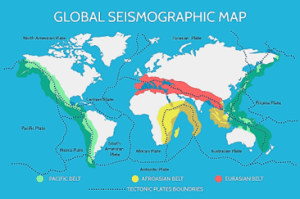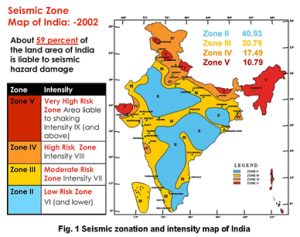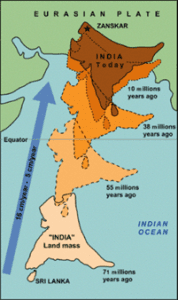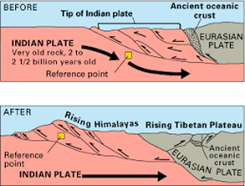A CHANGE FOR THE WORSE: ON THE RAPID DECLINE IN INDIA-MALDIVES TIES
THE CONTEXT: Recent tweets by Maldivian Ministers, attacking India’s Prime Minister for promoting the Lakshadweep islands and derogatory remarks about Indians have led to rapid decline in ties between India and the Maldives. This happened just a month after Indian Prime Minister met with the newly elected Maldivian President.
ISSUES:
- Anti India stance: There has been a shift in Maldives’ foreign policy towards India. The current ruling government in Maldives rode to power on the back of the “India Out” campaign. Also, they have chosen Turkey as his first bilateral destination, and is now visiting China becoming the first President not to make India his first priority.
- Concern regarding diplomatic and political relationship: Due to the recent mis happenings the diplomatic and political relationship between the two countries, built over the last six decades has been at stake.
- China’s angle: The most obvious concern is the impact of the developments on the strategic competition with China in the region. The competition is heating up in the Indian Ocean region also with the shift of alliances. The pro-China stance led to a shift in Maldives’ traditional foreign policy, which had typically been closer to India.
MALDIVES’S SIGNIFICANCE FOR INDIA
- Location and maritime security:Maldives proximity to the west coast of India and its location at the hub of commercial sea-lanes running through the Indian Ocean has significant strategic importance to India.
- Defence:The security scenario in India’s periphery in the Indian Ocean is very much linked to the maritime strength of Maldives. This is the reason why India invests In Maldives’ security by training its defence forces.
- Strategic interest: From a strategic perspective, India needs Maldives on its side to secure its maritime periphery to keep an eye on the Indian Ocean, and check the influence of China in its neighbourhood.
INDIA’S SIGNIFICANCE FOR MALDIVES
- Daily needs:India supplies Maldives with its everyday essentials including rice, spices, fruits, vegetables, poultry basically every possible edible item in the country. It supplies medicines not just everyday medicines, but all critical care and life-saving drugs.
- Education:India has been the education provider for Maldivians. Maldivian students flock to Indian higher educational institutions. The government gives out scholarships for Maldivian students to study in India.
- Economic dependence:Maldives is dependent on India for most items, and hence India is among its top trading partners. Of the Rs 50 crore total trade between India and Maldives in 2022, Rs 49 crore was India’s exports to Maldives. India emerged as Maldives’ second largest trade partner in 2022.
THE WAY FORWARD:
- Rethink the responses: With the calls for boycotts and rising hyper nationalism, both India and Maldives need to take a step back and reassess their responses. It is in the interest of both the nations to address the current tensions, by cooperating with each other on what matters most for both sides.
- Collaboration: Both the nations need to recognise the importance of regional peace and security and each other’s importance. Maldives needs India’s support given its proximity, economic might and historical position as a net security provider in the Indian Ocean. India too must see the importance of this small and strategic neighbour.
- Transparent funding: New capacities in these areas developed through transparent funding mechanisms should be at the priority leading to investments free of difficult conditionalities. The appeal of the investments would increase if prominent local business groups are also roped in as stakeholders in the projects.
- India’s proactive role: India must play a key role within Indo-Pacific security space to ensure regional security in South Asia and surrounding maritime boundaries. It is time to highlight the SAGAR (security and growth for all in the region) initiative of India as a comprehensive maritime doctrine for regional diplomacy both maritime and conventional.
THE CONCLUSION:
India and the Maldives should see the benefits of closer ties. India should adopt an accommodative stance in keeping with its age-old tradition of promoting multi-polar and rule-based world order with respect to its neighbours.
UPSC PREVIOUS YEAR QUESTIONS
Q.1 What do you understand by ‘The String of Pearls’? How does it impact India? Briefly outline the steps taken by India to counter this. (2013)
Q.2 Discuss the political developments in the Maldives in the last two years. Should they be of any cause for concern to India? (2013)
MAINS PRACTICE QUESTIONS
Q.1 Amid hyper-nationalism and religious fervour, our diplomatic approach to Maldives needs scrutiny. Comment.
Q.2 Maldives has become a flashpoint in regional relations and can turn into a perennial source of regional friction with serious implications for the Indian Ocean region’s economic prosperity and political stability. Discuss.

 the form of seismic waves, which propagate through the Earth and cause the ground surface to shake. Such movement on the faults is generally a response to long-term deformation and the buildup of stress.
the form of seismic waves, which propagate through the Earth and cause the ground surface to shake. Such movement on the faults is generally a response to long-term deformation and the buildup of stress.
 Eurasian plates causes frequent earthquakes in this region. The Himalayan region comprises several states, including Jammu and Kashmir, Himachal Pradesh, Uttarakhand, Sikkim, and Arunachal Pradesh.
Eurasian plates causes frequent earthquakes in this region. The Himalayan region comprises several states, including Jammu and Kashmir, Himachal Pradesh, Uttarakhand, Sikkim, and Arunachal Pradesh. Ocean. It is in motion, and its primary direction of movement is northward.
Ocean. It is in motion, and its primary direction of movement is northward. release of accumulated stress along fault lines.
release of accumulated stress along fault lines. prolonged period, holding possibility that the accumulated strain may be released in a future event.
prolonged period, holding possibility that the accumulated strain may be released in a future event.